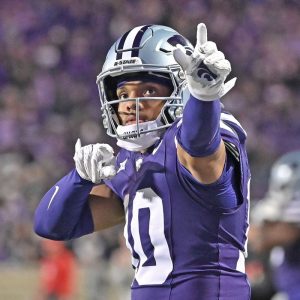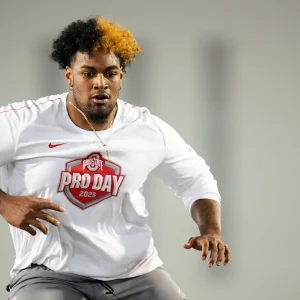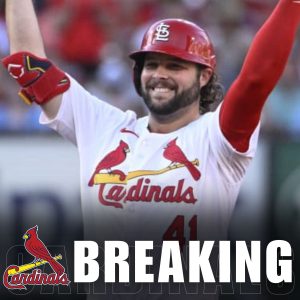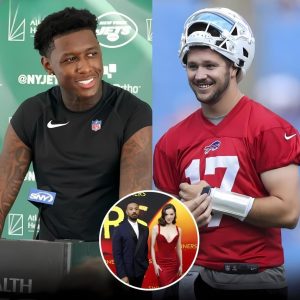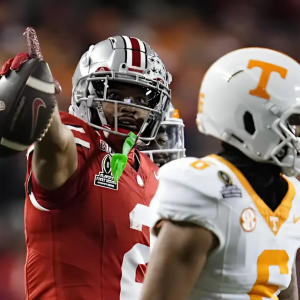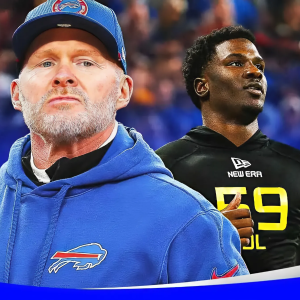The Buffalo Bills have an outside chance at getting their third-leading rusher back to play the Baltimore Ravens on Sunday.
Rookie running back Ray Davis remains in the NFL concussion protocol but was a limited participant at Wednesday’s practice.
The league defines limited participation as a player who takes less than 100% of his normal repetitions during practice. Davis was performing football-related activities, according to Bills play-by-play announcer Chris Brown. That means he’s at least in Step 3 of the NFL’s 5-step protocol to return to play.
Davis, 25, sustained a concussion when he took a shoulder to the helmet from Denver safety Brandon Jones in Buffalo’s 31-7 romp against the Broncos in the wild-card round Sunday. Davis lunged with outstretched arms attempting to make an over-the-shoulder grab on a wheel route in the third quarter. He was off-balance when Jones delivered the hit.
Davis fell to his back and Buffalo center Connor McGovern ran over to Davis’ side and signaled for the Bills’ training staff. Trainers initially brought out a backboard but Davis was able to walk off under his own power. He walked to the locker room and was ruled out with a concussion.
It is Davis’ first known concussion.
“Love y’all,” Davis posted on X at 6 p.m. Sunday.
Davis will need to pass the NFL’s five-step concussion protocol process to return to the field.
Davis, who was drafted by Buffalo in the fourth round, No. 128 overall, had 631 total yards in the regular season. He ranked third on the Bills with 442 rushing yards and third with six combined rushing and receiving touchdowns (three rushing and three receiving).
Buffalo only had two players that weren’t full practice participants: Davis and offensive lineman Alec Anderson. Return specialist Brandon Codrington, who missed the wild-card game with a hamstring injury, logged a full practice.
“(Codrington) looks like he’s ready to go,” McDermott said Wednesday.
Baltimore Pro Bowl wide receiver Zay Flowers, who injured his right knee in Week 18 and didn’t play in the Ravens’ wild-card round victory, did not practice Wednesday.

What is the NFL concussion protocol?
When a player receives an impact to the head during a game, the player goes into the Concussion Protocol if:
- The player exhibits or reports symptoms or signs suggestive of a concussion or stinger (a nerve pinch injury); or,
- The team athletic trainer, booth ATC spotter, team physician, NFL game official, coach, teammate, sideline unaffiliated neurotrauma consultant (UNC) or booth UNC initiates the protocol.
Then the player must be immediately removed to the sideline or stabilized on the field to undergo the concussion assessment, outlined in a concussion game day checklist, which can include a sideline survey, locker room exam and flow chart that determines if a player can or cannot return to play.

Concussion protocol return to play steps
Every player diagnosed with a concussion must follow a five-step process before being cleared to fully practice or participate in an NFL game. The process has clearances for incrementally ramping up activity. There is no set time frame for passing the steps.
A player must progress through the process, be cleared for full participation by the team doctor and be seen and cleared by an independent neurological consultant.
Here are the steps to return to participation:
- Symptom limited activity: The player is prescribed rest, limiting or, if necessary, avoiding activities (both physical and cognitive) which increase or aggravate symptoms. Under athletic training staff supervision, limited stretching and balance training can be introduced, progressing to light aerobic exercise, all as tolerated.
- Aerobic exercise: Under direct oversight of the team’s medical staff, the player should begin graduated cardiovascular exercise and may also engage in dynamic stretching and balance training. Neurocognitive and balance testing can be administered after completion of Phase Two and the results should be interpreted as back to baseline.
- Football specific exercise: The player continues with supervised cardiovascular exercises that are increased and may mimic sport-specific activities, and supervised strength training is introduced. The player is allowed to practice with the team in sport-specific exercise for 30 minutes or less with ongoing and careful monitoring
- Club-based non-contact training drills: The player continues cardiovascular, strength and balance training, team-based sports-specific exercise, and participates in non-contact football activities (e.g.throwing, catching, running, and other position-specific activities). Neurocognitive and balance testing should be completed no later than the end of Phase Four with the results interpreted as back to baseline.
- Full football activity/clearance: Upon clearance by the Club physician for full football activity involving contact, the player must be examined by the Independent Neurological Consultant (INC) assigned to his Club. If the INC concurs with the Club physician that the player’s concussion has resolved, he may participate in his Club’s next practice or game.
